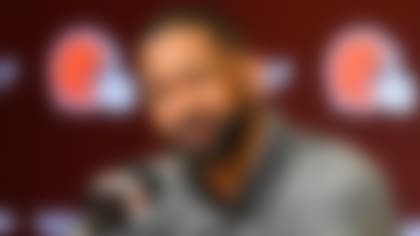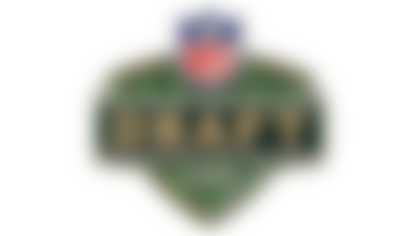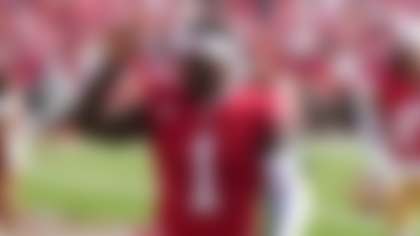If you thought the Indianapolis Colts were one-year wonders -- based on their 2012 storybook ride into the playoffs -- you thought wrong. We're witnessing the emergence of a new bully in the AFC.
Fresh off a statement win over the San Francisco 49ers, Chuck Pagano's young squad is a serious threat to make a run at Super Bowl XLVIII behind an old-school offense that can give opponents fits with a mix of power and explosiveness.
After taking some time to dig into the All-22 Coaches Film of Indianapolis' recent performances, here are three reasons why the rest of the AFC should take notice of the rising Colts this season:
1) Andrew Luck is the real deal.
It's not often a top NFL prospect truly lives up to the excessive hype, but that certainly is the case with Luck. The No. 1 overall pick in the 2012 NFL Draft was widely regarded as the most polished quarterback prospect to enter the league since Peyton Manning. Thus far, Luck has done nothing to change that opinion.
Last season, Luck shattered the NFL rookie passing-yardage record and helped transform a two-win team into a playoff participant. Most importantly, he did it while learning on the job with a host of rookies and castoffs around him. Nobody expected a winning season from the Colts, but they notched 11 victories.
Studying Luck's game from his rookie campaign, I clearly saw all of the traits that made him the consensus No. 1 prospect in the class; from his superb football IQ to his stellar arm talent, he showed the ability to win the game in all aspects. Additionally, he surprised opponents with his athleticism and masked deficiencies along the Colts' offensive line by routinely escaping collapsing pockets to deliver pinpoint throws down the field. Luck's interception total (18) certainly was higher than most offensive coordinators would like, but the fact he was asked to throw 627 times is a testament to his advanced skills as a passer.
This season, Luck looks vastly improved as a passer and playmaker. He is more decisive in the pocket and willing to take advantage of checkdowns when opponents sink back to take away deep threats. Part of Luck's development can be attributed to playing in a familiar offensive system -- Pep Hamilton is in his first year as Indy's offensive coordinator after spending the past three seasons at Stanford -- while the rest of the QB's growth is a product of maturation and hard work over the offseason. Luck simply is more comfortable as the leader of this team, and that burgeoning self-confidence has made him one of the top players at the game's most important position -- in his only his second season.
2) The Colts have provided Luck with enough weapons to succeed.
For all of the conversation about the NFL being a quarterback-driven league, I'm shocked at the number of franchises that refuse to give their marquee player enough perimeter weapons to shine. The Colts, however, are one of the few teams that routinely surrounds its franchise QB with the kind of playmakers needed. This has been an Indy hallmark since Peyton Manning's arrival in 1998, and it continues with Luck taking over as the face of the franchise.
It's obvious that second-year general manager Ryan Grigson and Pagano wanted to make sure Luck had a stable of dynamic pass catchers around him. After taking Luck first overall, the Colts scooped up tight ends Coby Fleener and Dwayne Allen and receiver T.Y. Hilton in the 2012 draft; the idea was to give Luck a young nucleus of playmakers to grow up with in the passing game. Additionally, the team resigned Reggie Wayne to provide Luck with a dependable option in critical situations. Wayne, a six-time Pro Bowl receiver, amassed 1,355 yards on 106 catches last season, significantly easing Luck's NFL transition.
This season, Wayne still is the Colts' primary option in the passing game, but most of his damage comes on third down or in the red zone. He remains one of the best route runners in the business, and the Colts exploit his talents by frequently aligning him in the slot to get him free access into his patterns. This allows Wayne to sit down in open spaces against zone coverage while also providing more room to use angles against bump-and-run tactics.
In the screengrab below, taken from Sunday's win over the 49ers, Wayne is aligned in the slot as part of the Colts' empty formation on third down. On the snap, Wayne will execute a snag route, with Fleener running a bench route from the No. 3 position:
As Wayne works underneath on the snag, 49ers cornerback Carlos Rogers turns to double-team Fleener on the bench route. This leaves Wayne unguarded on the snag:
Wayne makes a nifty catch-and-run for a 25-yard gain.
With Wayne thriving as the No. 1 receiver, Hilton has settled into his role as the designated big-play threat. He averaged 17.2 yard per catch as a rookie, and he remains a viable perimeter threat with his explosive speed and quickness. He simply blows past defenders on vertical routes, making him Luck's first thought when attacking downfield.
In the following screengrab, taken from Indy's Week 2 loss to the Miami Dolphins, Hilton is flanked out wide on the right. He is facing one-on-one coverage, which makes him the primary target on the Colts' all-go play:
Although Hilton doesn't sprint past Dolphins cornerback Brent Grimes on the route, his combination of athleticism, leaping ability and ball skills allows him to come down with this 50-50 ball:
This results in a 47-yard gain.
Wayne and Hilton give Luck dynamic outside targets, but every quarterback needs a big-bodied tight end to take advantage of mismatches between the hashes. The Colts lost Allen for the season, but the cupboard's not bare. Fleener not only excels at blowing past lumbering linebackers on vertical routes, but he has a knack for using his superior size against smaller defensive backs. This is a significant advantage all over the gridiron, especially in the red zone, where the field is condensed.
In the next screengrab, the Colts are aligned in a bunch formation with Fleener at the point. On the snap, he will run a corner route, with Wayne bursting to the flat and Hilton running a snag route:
With the bunch formation creating indecision for Miami's defense, Fleener races past the safety, giving Luck a huge throwing window:
Fleener corrals the pass for an easy 3-yard touchdown.
3) Pep Hamilton has Indy playing old-school football on offense.
To create a winning environment for Luck, the Colts not only brought in a handful of perimeter playmakers, but they added an innovative play-caller and two power runners to alleviate the pressure on the young quarterback.
Hamilton, the Colts' first-year offensive coordinator, spent two seasons working with Luck at Stanford. Hamilton's extensive knowledge of Luck's game makes it easy for him to build around the quarterback's strengths as a passer. Also, Hamilton is well aware of Luck's uncanny ability to get his team in the correct call in the running game. Stanford pummeled opponents with a power running game that featured a number of "check with me" calls (the quarterback decides whether to run or pass at the line of scrimmage, based on the defensive alignment). Additionally, Hamilton's implementation of a power-based running game helps Luck see more loaded boxes, which creates high-percentage passing opportunities on the outside in early downs. Given Luck's high football IQ/arm talent, the presence of a stout running game could take his game to another level.
The Colts spent the entire offseason crafting a power-based system that features a ton of inside runs designed to soften the interior of the defense. This is the perfect system for free-agent addition Ahmad Bradshaw and trade acquisition Trent Richardson. They both excel at grinding out tough yards between the tackles while also providing a hint of explosiveness on the perimeter.
In Bradshaw, the Colts have a veteran back with a distinguished track record as a physical grinder. He plays much bigger than his 5-foot-10, 214-pound dimensions and displays a rugged style built on toughness. While routinely hammering the ball inside has taken a toll on his body, Bradshaw remains a threat with the ball in his hands, as evidenced by his performance since he stepped into the Colts' lineup as a featured runner in Week 2 (thanks to Vick Ballard's season-ending knee injury).
Bradshaw is averaging 4.5 yards per carry, displaying the trademark toughness that helped him top the 1,000-yard mark twice during his six seasons with the New York Giants. In the video clip just above, you can see the combination of instincts, vision and burst that makes Bradshaw effective between the tackles. Most importantly, you can see the powerful finish that makes him a challenge to defend as a featured runner.
Richardson, the No. 3 overall pick in 2012 (two picks after Luck), gives the Colts a dynamic power runner with terrific instincts, awareness and toughness. He is a sledgehammer running between the tackles, with a relentless style that wears down opponents. While some scouts take issue with Richardson's tendency to dance at the point of attack, the fact that he racked up 950 rushing yards and 12 total touchdowns as a rookie with the Cleveland Browns (against loaded boxes, to boot) suggests he's certainly talented enough to thrive in an old-school Colts offense that has better weapons on the perimeter.
Seeing how the Colts used Richardson against San Francisco makes it easy to envision him handling a workload of 15 to 20 carries per game. Richardson excels at coming downhill in two-back sets, which makes him a dangerous weapon on goal-line and short-yardage plays. Take a look at the video clip to the right to see him punch it in on his first carry as a Colt.
Richardson also is a natural pass catcher out of the backfield, something Indy definitely will take advantage of.
Given Hamilton's experience in building power-based ground attacks and the Colts' addition of two hard-nosed runners, Indy suddenly has an offense that is ideally suited for postseason play -- at home or on the road.
Follow Bucky Brooks on Twitter @BuckyBrooks.












